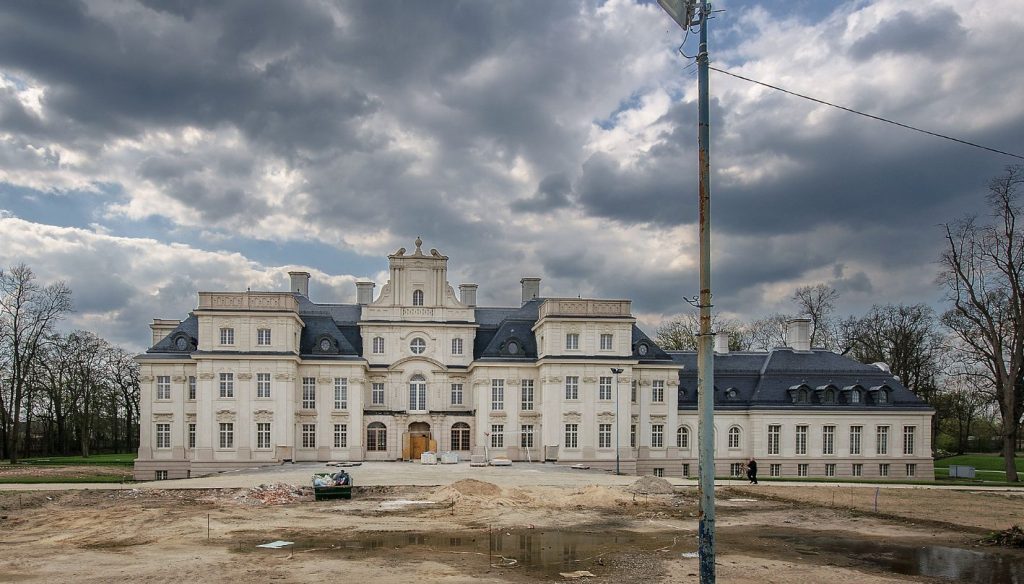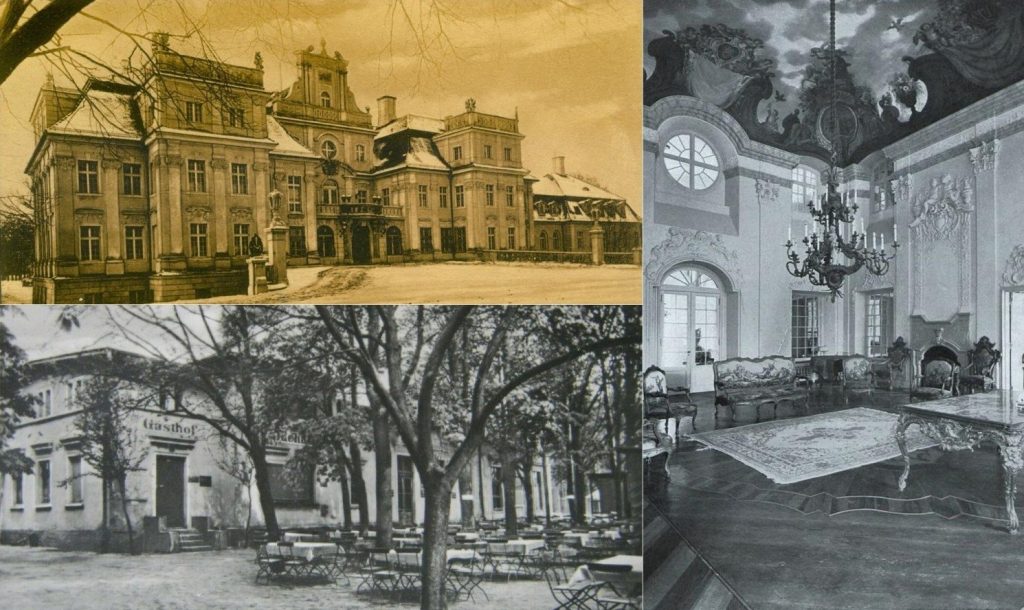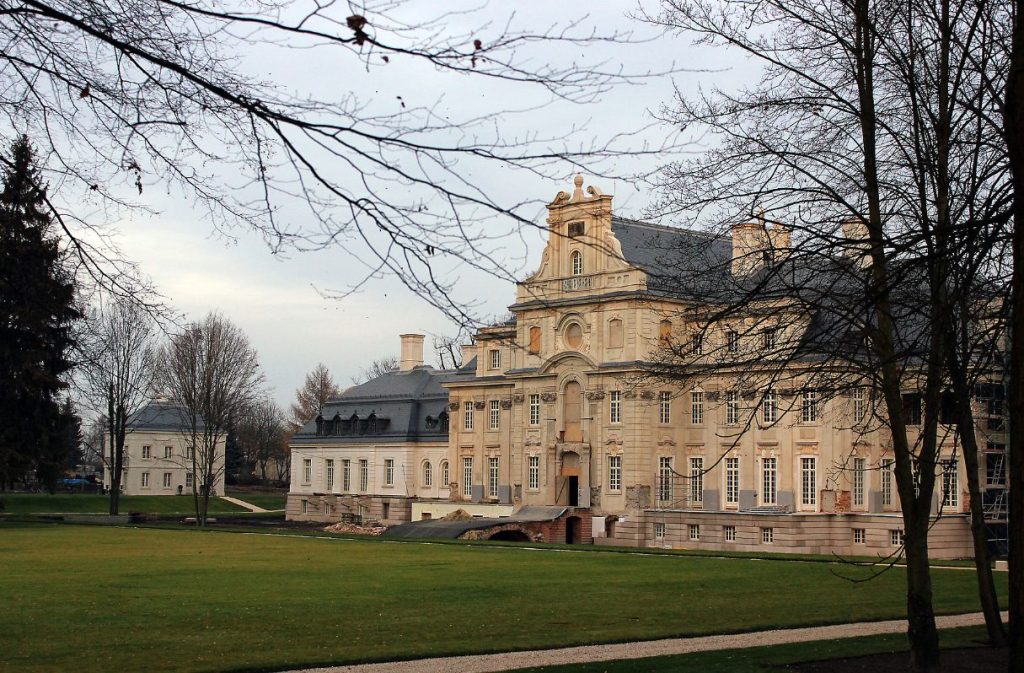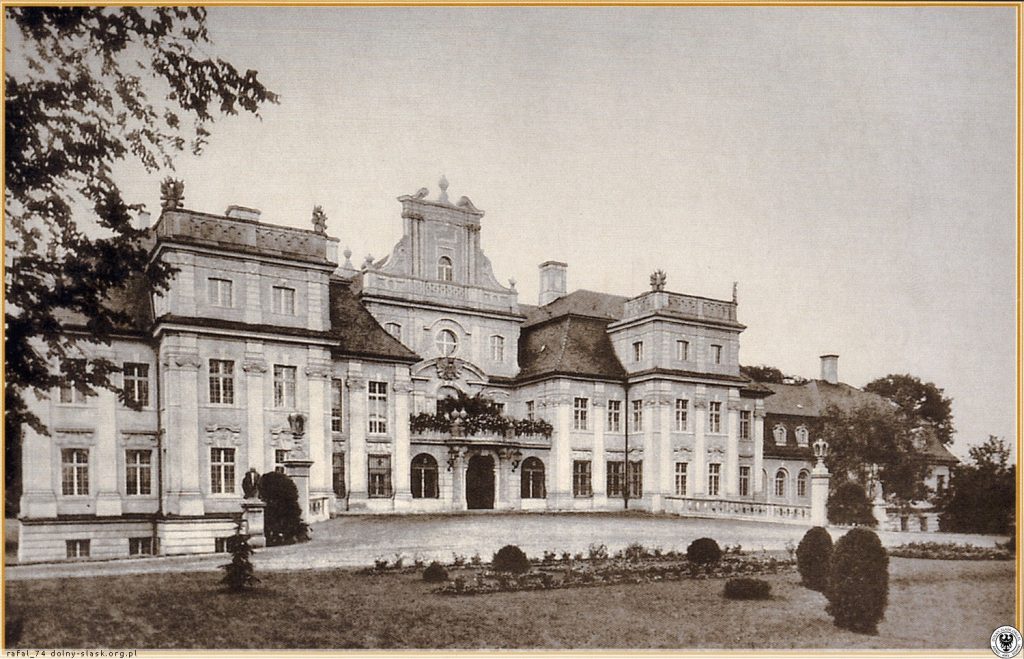Chróstnik Palace | Architectural Gem Reborn from Ashes

The palace in Chróstnik stands as a testament to its rich history. Originally situated on the site of a 14th-century castle, it was commissioned for construction by the von Brauchitsch family. The transformation from castle to palace took place between 1723 and 1728 under the orders of Colonel Georg Karl von Haugwitz, who served the King of Poland. The talented architect Martin Frantz was responsible for the palace’s design.

In 1909, an outbuilding and a kitchen were added to the palace, and remnants of the original castle’s moat can still be seen today. The northern part of the palace still boasts a filled moat, while a depression in the ground marks the moat’s former location in the southwest.
Following World War II, the palace became a Russian military hospital before being returned to the Polish authorities in the early 1950s. It served various purposes, including an Agricultural School in the 1960s and a boarding school in the 1970s before tragically burning down in September 1976. Over time, the remaining ruins were gradually looted.

However, in 2009, Dariusz Miłek acquired the property and embarked on a significant renovation project estimated to cost several million zlotys. The palace received a new slate roof imported from Germany, and a 40-year-old tulip tree from Belgium was planted in the park. Additionally, Miłek purchased adjacent buildings and demolished them. He also acquired nearby private residential properties.
The palace in Chróstnik is a magnificent example of Baroque architecture. It features a symmetrical design with intricate stonework and numerous decorative details. The interior layout primarily consists of a corridor leading from a central hall, with representative rooms along the palace’s axis. These rooms have eight bays covered with sail and groin vaults.

The ballroom provides access to the garden through extensive terraces and sand stairs. The palace’s interior is adorned with elaborate architectural designs and stucco decorations, including frescoes on the ceilings and painted platforms in the dining room. A grand driveway extends over the moat, bordered by a painted balustrade and stone balcony laterals on pillars.

The palace’s front facade includes a three-story central section, two-story side wings, and three-story avant-corps on the sides, topped with stone balustrades for terraces. The central part of the facade is especially decorative, featuring an ornate architectural gable.
The main portal is basket-shaped, framed by diagonal pilasters with consoles supporting the central terrace of the first floor. A profiled portal with an elliptical arch surrounds the full entrance to the palace, topped with a rich cartouche in the segmental tympanum at the eaves level. Rectangular windows on the ground floor are adorned with fancifully curved edges.

The central part’s third floor has a central window in the form of an ellipse, distinguishing it from the more modest side wings. The park facade mirrors the symmetry of the main facade, with a three-story central section and a balcony on the first floor, adorned with balustrades and sculptures.
The palace’s mansard ceramic roof is adorned with cup-shaped superstructures on the facades’ axes, while original-shaped chimneys are topped with cornices.